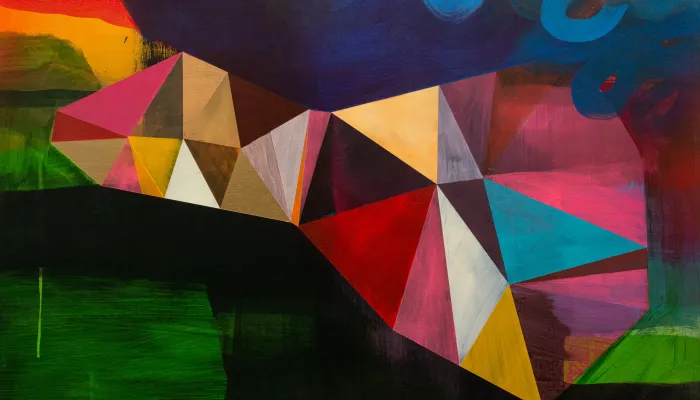After learning “me” and “I”
but well before my father learns
a restraining order's
between him and our home,
we share some good times.
Remember the back of his bicycle.
I sit on a seat secured over the tire.
Our laughter lolls like exhaust
as we drive over bumps in the lawn,
dandelions losing their heads
between the tires and spokes.
Remember his Suzuki.
The Z holds pre-literate powers in its
70s font blazing like Evel Knievel
sideburns. Gear shift jerk. The smush
of my ear against black foam lining.
The outer shell of my white helmet
presses into his large back. Another
gear shift knock. Fraser Highway's
convenience store shacks blur by.
Until one intersection flips
onto its side and freezes as if caught
in our single headlight.
“Are you okay?”
My open mouth is the reply.
As a child I didn't know what drove him.
A complicated accident to report;
many words spinning out of reach.
The poet remembers a father lost long before his death.
- Why do you think the poet chose this title? Look up ‘top’ and decide whether any definitions seem to fit. Can you think of an alternate title?
- Read the poem and concentrate on the images, listing them without thinking about what the poem means. Then list all the verbs. Then ask yourself, How does the speaker use these images and verbs to evoke a mood? What would you say that mood is?
- How old do you think the speaker is in the events described? Does that change? What in the poem suggests your understanding?
- How does the poet use the divisions marked by the stanza breaks to mark a shift in perspective? Notice how the first stanza and later stanzas bookend the two memories of the speaker and his father together.
- Read the poem aloud and notice how it feels to say it - in particular, the alliteration (I sit on a seat secured; Our laughter lolls like exhaust). Can you feel how the sounds pull the reader into the pleasing motion of the language?
- Write a poem about an experience, feeling or relationship you can’t entirely express in any literal, direct way using images and verbs to create the mood. Use “Top” as a model if you wish.
Useful Links:
Check out this micro-interview with Kevin Spenst, in which he explains how he stitched together two rare memories of being with his father to create “Top”: https://poetryinvoice.ca/read/poets/kevin-spenst
Read this Q & A to learn more about the poet, his father’s schizophrenia and strict Mennonite religion, and to gain insight into the title, “Top”: https://wordgathering.com/past_issues/issue45/reviews/spenst.html
Learn more about Ignite, the collection that “Top” is drawn from: https://www.anvilpress.com/books/ignite
Listen to Kevin Spenst read a poem: https://www.youtube.com/watch?v=jkgZY8n4Cw8
Kevin Spenst, “Top” from Ignite. Copyright © 2016 by Kevin Spenst. Reprinted by permission of Anvil Press.
Source: Ignite (Anvil Press, 2016)





